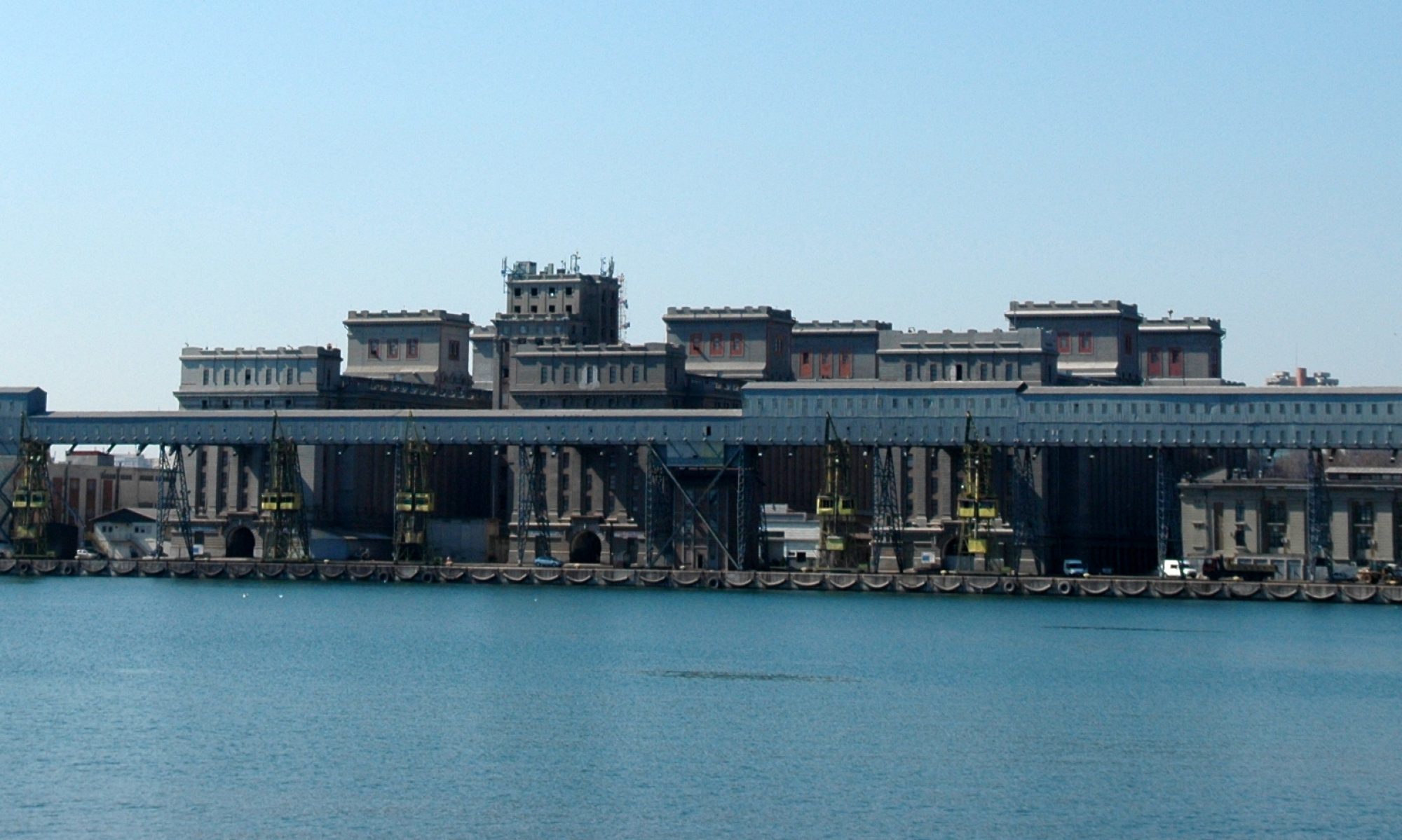Message for visitors
“Hello, I am your first stop on your journey to the “Metallurgic factory area of Limenaria, Thassos”. I would like to tell you about my story and also to share my concerns, because all along these years I’ve been wondering who really knows me and who cares about me.

First, let me introduce myself. People call me “Palataki” (Small Palace) because of my grand design. I was born in 1900 and my designer was the Italian architect Pietro Arigoni. You can consider me the most impressive of all the administration buildings of the Aegean islands, one of the most important industrial monuments in the Mediterranean! My first owner was Speidel, owner of the homonymous German mining company, which came to Thassos to inaugurate the modern period of mining activity on the island. I’ve been residence to the owners, also company offices and I’ve gone through such glorious times. Since then I’ve been watching the village, Limenaria, from up here, growing year after year. I changed many owners and uses, following the controversial history of the region and contributing to its development. Hosting daily events and important celebrations, I’ve accompanied and challenged the imagination of children, listened to love stories, sorrows, struggles and joys of adults.

But in the late ’60, the end of mining came…and activity began to decline. As the years went by, I was looking from above, generations following one after the other, the world changing faster and becoming more and more crazy. I was sad and looking for a little attention, wishing for a little life back inside of me. In 1982, after numerous studies and ministerial decisions, I’ve been declared a national monument. And there even were a attempts to have me repaired! I felt such joy and relief! I dreamed that I would live the glamour and bustle of the past again.
Soon this relief stopped along with my dreams. My disappointment for the people grew up. I felt more alone than ever. With so many plans and titles, I felt like a retired general, who was conferred honorary medals, while they’re just waiting for me to die, to fall apart. And vandals come to plunder, destroying my decorations. The end seems now to happen; against the international, European and National authorities governing the Greek art and architectural sites, I’ve been cut off from the rest of the national monuments, being another victim of the economic measures imposed in Greece.

Still I stand here wounded, restless but proud. And you who have just read these few words of mine, please think that you have the power to protect me and my history. My time is over…so please hurry! Feel the value of what I represent to you and to future generations. As my only weapon in this battle I used my unique tale, my artistic value, hoping you would lift your head one day and look at me and not to feel regret, but pride, your eyes filled with my ancient beauty”.
After: Aegean Sea Metallurgy – industrial antiquities of Greece – Melissa, Athens, 2009. IGMR Institute of Geological and Metallurgic Research, translation: Dimitris Papaioannou. www.mmoth.gr

Dating back from 20’000 BC, the oldest European underground mine with horizontal excavation was discovered in Tzines on Thassos. Ancient historians Herodot and Strabon both mention the mining activity on the island: lead, iron, copper, silver and marble from the 7th century on.
Early 20th century, the German company Speidel Pforzheim obtained mining rights from the Ottoman administration for exploiting zinc, lead and silver ores here.
Palataki was built over the bay of Limenaria between 1903-1904 to house the administration of the mining company. A rectangular symmetrical building in the industrial style of the period, it was two stories high, had a basement and two little towers on its back facade.

Set up on the hill, it adapted in colours to the environment, with blue/green windows to match the sea and the pine trees around it, and yellow walls to blend in with the colours of the rocks and cliffs around it.

On the backside, the slope where the old rusty ore-enrichment installations lie ends in a beautiful beach: the Metalia. The only installations preserved here are the kilns (furnaces), part of the ore process from the early 1900s.
In 1913 the mining activity was interrupted due to the Balkan wars. At the end of the first World War, Thassos became Greek territory and another company won the mining rights at an international bidding:Vieille Montagne from Belgium founded the ‘Société Hellénique Métallurgique et Minière’ here, which modernized and enlarged the exploitation with rotating ovens.
The 1930s recession resulted in the fall of the metal prices, so the ore processing was stopped. From then on, the mines worked under the joint venture “Apostolu AE-SCHMIDT-KRUPP”, which started surface mining and producing iron ore at larger scale, and the great furnace-ramp was used only for the haulage of unprocessed ore to barges.
Loading and shipping in Limenaria, all products would go directly to German company Krupp. From 1962 the mining exploitation on Thassos stopped altogether, due to the discovery of richer and cheaper iron ore sources in Africa and South America.
Deserted in 1963, Palataki was supposed to be repaired in order to host a new cultural center. The floors and walls were left naked, since all metal parts and machinery have been looted and sold as scrap.




A few days ago, on September 10th, 2016, Thassos was hit by a dry storm. Dozens of lightning strikes hit the island in 4 different corners and set fire to the pinewoods where it hadn’t rained for 3 months. The fire blazed for 3 days and was the worst after 1989.
The island is now safe again: please keep it in mind when planing your holidays!
Thassos and the Palataki are looking forward to seeing you around.
